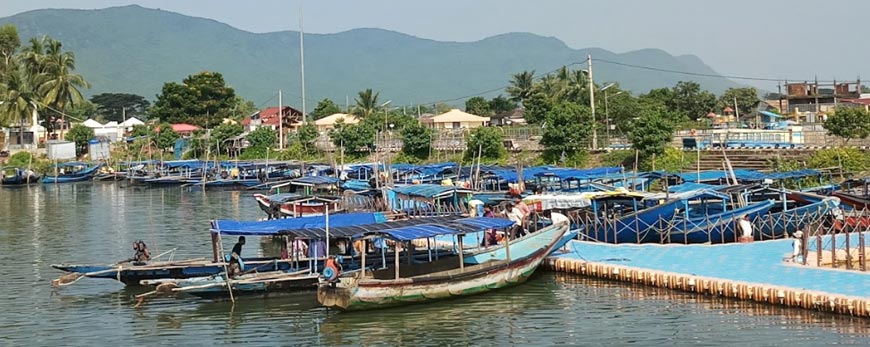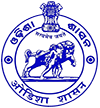
Best time to visit Chilika Lake-Round the year
Chilika is the largest brackish water lagoon in the East-coast of India. It is an unique assemblege of fresh water ,brackish and marine ecosytem and a hot-spot of biodiversity which support the Socio-economic mileau of about 0.2 million fishermen living in and around the lagoon. The Lagon is a wetland of International importance and designated as a "Ramsar Site" in the year 1981. The lagoon is the wintering ground for more than one million migratory birds.
The Lagoon had been facing the problems like – siltation, shrinkage of area, choking of the inlet channel as well as shifting of the mouth connecting the sea, decrease in salinity, proliferation of invasive fresh water species, decrease in fish productivity and an over-all loss of biodiversity. Due to the change in the ecological characters of the lagoon, it was placed in the montreux record in the year1993. While comparing the data of the pioneering studies on Chilika done during the year 1915 to 1924, with the data generated by way of extensive survey carried out by Zoological Survey of India after 60 years i.e during 1985-87, opined that the lagoon ecosystem is tending towards a fresh water ecosystem and warrants urgent restoration measures.
Considering the sensitive lagoon eco-system, extensive hydrological studies were carried out by commissioning the services of the pioneer institutes of the countries to find out the best options to restore its ecosystem. Based on the findings of the extensive studies a number of ameliorating measures were recommended by these institutes and the Chilika Development Authority took steps to execute them to restore it’s ecosystem.
One of the major interventions was the desiltation of the outer-channel, which connects the Lagoon to the sea, near Magarmukh by dredging, and opening of an artificial mouth along the sand spit at a distance of 11 kilometers from the lake proper, which is considered as a historical and most successful hydrological intervention to save the eco-system of the lagoon. Due to desiltation of the outer channel and opening of the new mouth the following positive impacts are observed,
a) There is improvement of salinity flux resulting in the restoration of the salinity gradient of the lagoon
b) There is better exchange of the water between the lagoon and the sea
c) It is also helping in flushing-out of the sediment from the lagoon
d) Reduction of the water-logging in the paddy field of northern sector during monsoon
e)There is a substantial improvement of the fishery resources due to the auto-recruitment of the juvenile from the sea and the free migration of the fish and other economic species from the lagoon to the sea and vice versa
f) Due to increase in the salinity regime there is reduction of the fresh water weed in the northern sector
g) The dredge spoil is deposited on an existing island and is planted with suitable species to provide the perching facility to the migratory birds, this will further add to the species diversity.Other important interventions were
- Treatment of the catchment in a participatory manner on a micro watershed basis: With an objective to facilitate a community based co-management strategy for an integrated terrestrial and aquatic resource management programme, with a major emphasis on the capacity building at the community level at the out set through series of training and exposure visit, to pave the way for preparation of the micro plan blended with indigenous knowledge at the community level for optimum utilization of the natural resources to increase the productivity . The watershed community also shares the part of the cost of the treatment. This is also creating an enabling situation for the local community to take decision and to understand the problem in a better manner. The result are encouraging and the participation of the stake holders is also remarkable.
- Restoration of Nalabana bird Sanctuary and the protection of the habitat of the avian fauna of the lagoon: Nalabana island was notified as a bird sanctuary under Wild life (Protection) Act in the year 1987. This is an avian grandeur and a wintering ground for more than one million birds. To augment the habitat management of the sanctuary and restoration of its ecosystem, fund from special problem grant was provided to the wildlife division. The major break through in the conservation of the avian fauna was weaning away the villagers who had adopted poaching of the birds as their principal source of livelihood, by arrangement of the soft term loan by CDA in collaboration with a Nationalized bank for the villagers to adopt alternate source of livelihood. In the process the villagers not only abandoned the poaching but also formed the birds protection committee at village level, the youth of the above villages are acting as nature guide to conduct the tourists around the birds habitat. For the first time in the history of the Chilika thousands of the nest and the eggs of a number of rails and coots could be saved during the year 2001. To encourage the community initiative “ Friends of the Birds” award is instituted by CDA and first set of awards were given during the celebration of the wild life week to the two birds protection committees in 2001.
- Weed management: Due to siltation, and decrease in salinity, the lagoon was infested with the fresh water invasive species. The weed-spread area of the lagoon proliferated from 20 sq.km in 1972, to 684.70 sq.km in 2000. Due to this, the weed free area available for fishing was considerably reducing, it was also posing problem for navigation. After opening of the mouth the fresh water invasive species, particularly the area infested with water hyacinth decreased and 508.56 Sq kilometers area was observed to be weed free, thus 157.05 Sq kilometers more area became weed free in comparison to the year 2000, which is being monitored through the in-house image-processing unit of CDA. Seventy-two numbers of weed-based biogas plants were installed in three fishermen villages based on the Chilika weed.
- Improvement of fishery resources: After the opening of the mouth there was a remarkable improvement of the fishery resources. As against the average annual fish landing of 1600 metric tons, recorded during the past six years, the fish landing during the year 2000-2001 improved to 4889.21 tons and the seven months landing after the opening of the new mouth i.e., from October 2000 to March 2001 alone was 3718.44 metric tons. From April 2001 to October, 2001 the fish landing is recorded to be 6737.88 metric tons, which indicates a significant improvement over the previous years. It is expected that the fish landing may touch 10,000 metric tons during 2001-2002, which will be all time high record for the lagoon . This improvement is due to the auto recruitment of the fish prawn and crab juvenile freely from sea to the lagoon and the free movement of the species who maintain a phased life cycle. Paeneous indicus an important species of prawn, which was thought to have extinct from the system, reappeared after opening of the mouth. The crab landing which had dwindled to 10 metric tons improved to 90 metric tons after the opening of the mouth in 2000-2001.
- Awareness and environmental education : The Chilika Development Authority in collaboration with the grass root level NGOs and Community based organization as well as the women organizations working in and around the lagoon carried out a number of programme on the environmental awareness and education including the celebration of the World Wetland day, meeting at the village level, development of the environmental education materials, brochures on environmental themes, wall paintings, publication of a quarterly news letter in local language (Oriya) highlighting the issues of the lagoon and the stake holders, environmental education programme for the school children and development of a visitor center at Satapada which is considered as the gate way to Chilika. The visitor center will be the first of it’s kind in India. The vast diversity of Chilika lagoon offers ample scope for eco-tourism. It has got vast potentiality to generate employment for the unemployed villagers, living in and around the lagoon. Orientation training programme are also organized for the boatmen who conduct the tourists within the lagoon, and act as nature guide.
- Improvement of the communication network: A number of thickly populated island villages do not have proper communication facility which is the major bottle neck for the economic development of the area. As a major step to address this problem particularly for the island villages, a ferry service is developed by the Chilika Development Authority, this will benefit more than 70,000 people.
- Socio economic improvement : A socio-economic survey was conducted to identify the socio economic issues of the villages and the community. Based on the findings a number of measures were taken to improve the socio economic condition of the community. Solar streetlight systems are provided in the island villages. Jetties are constructed to provide the landing facility to the villagers in and around Chilika. Two numbers of waiting-cum-auction halls are constructed at Kalupada Ghat and Sorana, which are the two prime fish landing centres of Chilika. Solar lighting is also provided at Kalijai island of the lagoon under this component.
- Research centre on wetland management at Balugaon : Chilika provides an excellent and unique opportunity for research on a tropical lagoon eco system, to facilitate this a wetland research center is developed on the shore of the lagoon. The building is constructed by the engineering wing of the CDA, within a record time.
Other activities: Hydro-biological monitoring of the Lagoon is being carried out in collaboration with the Wetlands International – South Asia (WISA) on a long term basis for four years which commenced from the year 1999, to identify and document the key hydrological and biological parameters of the lagoon. The close monitoring of the physico-chemical parameters of the lagoon is also carried out from the thirty monitoring locations spread over all the four ecological sectors. The study of the irrawady dolphin a key stone species is carried out by commissioning the services of a cetacean expert. A collaborative environmental education and awareness programme is carried out with the Pallishree a grass root level NGO with the support from the Japan Fund for Global Environment. A net working of the NGOs and CBOs working in and around the lagoon at the grass root level is developed by CDA. A federation of these organizations is constituted as the “ Campaign for Conservation of the Chilika lagoon” (CCCL), with the ten founder organizations. The CDA is organizing the capacity building by way of training programme and exposure visit for the members of the organisations for their capacity building. A mechanism for information dissemination to all the member organizations is also devised by the CDA. Now there are 15 NGO’s and equal number of CBOs in the network. A quarterly news letter on the environmental and issues relating to the stakeholders is published in in local language, in collaboration with the Pallishree a NGO. A technical newsletter is published high lighting the management issues the research findings and the studies, biannually in collaboration with the Wetlands International South Asia. The restoration measures taken so far are considered as holistic, comprehensive and most effective. It is considered in many National and International forum as a most appropriate eco-restoration model, which can be replicated in other parts of the globe. The Ramsar Adsvisory Mission based on their assessment of the restoration measures taken by the Chilika Development Authority have recommended for removal of Chilika from the Montreux record.



